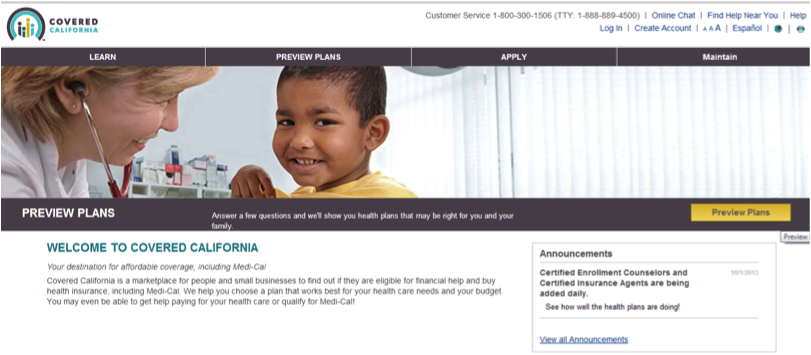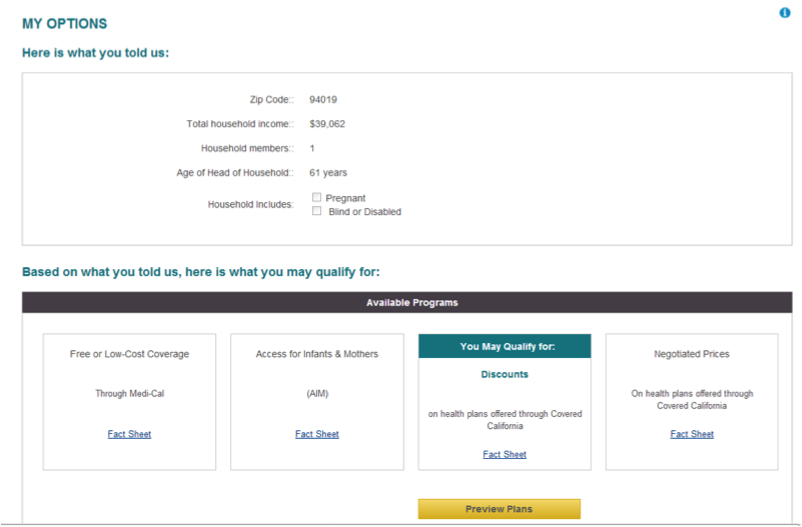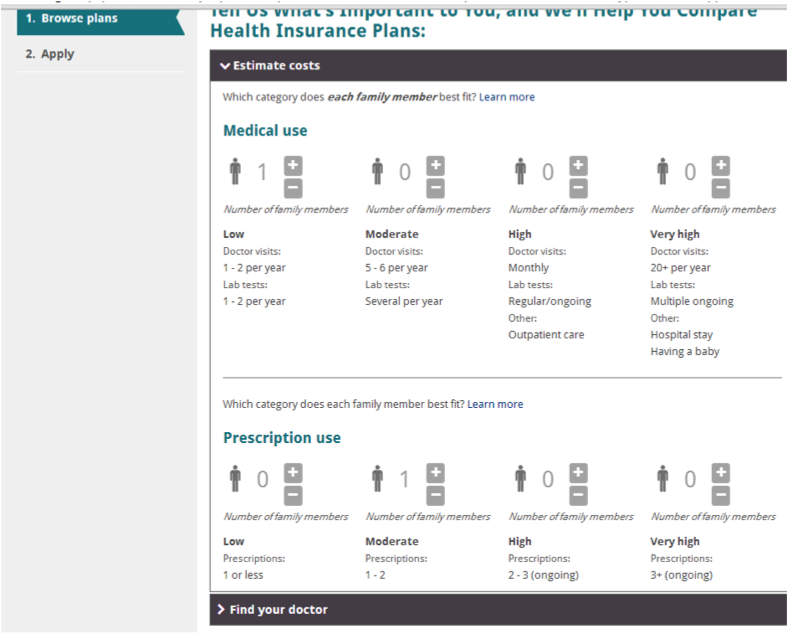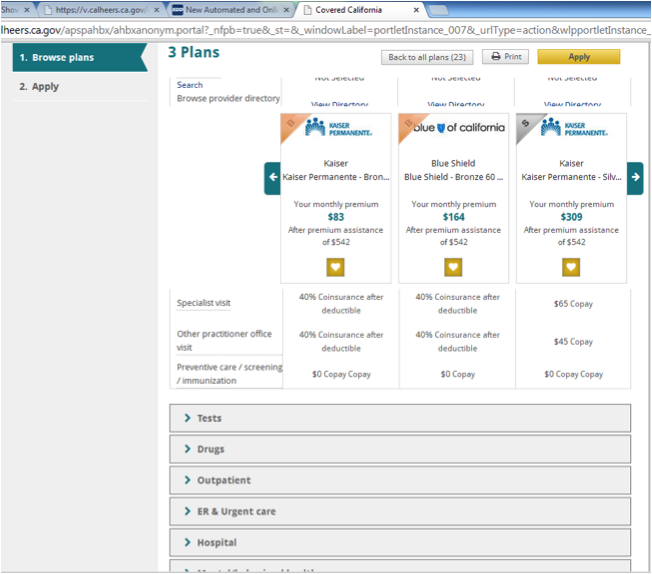Two Generations of Adjunct Professors Explore Covered California
by Lin Bowie, CSM EC Rep. and Biology Professor, and Caroline Bowie Stockhus, CSM English Professor
The Affordable Care Act (ACA), commonly known as ObamaCare, may be good news for adjunct faculty. As adjuncts, we do not get contributions paid by the District for health insurance premiums. Adjuncts can have access to the District group plans and pay one hundred percent of the premiums. These premiums are not cheap, and some adjuncts choose not to have health care coverage at all. The ACA may provide a more affordable health care choice for many of us. Here are District policies on benefits for part-timers:
Under the new contract, starting January 1, 2014, the District will provide up to $600.00 per period for reimbursement of employee-incurred health benefit costs to all part-time employees who are employed in the District at 40% or more of a full-time load (6/15 FLC) and complete a 40% load. The reimbursement will be paid for the periods January through June and July through December.
The ACA mandates health care coverage. Adjuncts that do not have health insurance will have to purchase health insurance through the District at 100 percent of the cost (less the reimbursement under the contract), or on the health insurance exchanges through CoveredCA, the California health care marketplace. The District reimbursement applies to any health care plan you purchase.
With the ACA, all of us have access to the new insurance marketplace. So, two of our adjunct professors, Lin Bowie, CSM EC Representative and Biology Professor, and Caroline Bowie Stockhus, CSM English Professor, decided to explore their options. Lin and Caroline happen to be related. Caroline represents a younger-aged adjunct, and Lin represents the somewhat older generation. We used the same income, the same zip code, and just varied the age and medical needs slightly. A summary of premium costs and copays/coinsurance is shown in the two tables. If you want to explore CoveredCA, see the instructions and some example screen shots on our web site.
Lin
Lin used to purchase health insurance on the private market some years ago, but now gets her coverage through the District. Lin went to the District because, overall, it was cheaper than the private market for her current age and health needs. Lin teaches enough units to qualify for the $600.00 reimbursement per semester under the AFT contract. Lin used her income from the District, so she could be an example of a typical older adjunct professor. She keyed in her household information to see what her choices might be.1 Lin is in a single-person household, with her children grown and on their own. Lin also teaches the summer semester, which raises her overall gross adjusted income for the year. Here is a brief comparison of what Lin found when she took only her gross income that she earns at the District (her salary and unemployment compensation). To make things equivalent, both Lin and Caroline used the same criteria, and compared a Bronze Kaiser, Bronze PPO, and a Silver Kaiser Plan. Lin and Caroline accessed the CoveredCA web site at www.coveredca.com. When you access the site the screen gives you an option to compare plans directly, but for the purpose of this article we used the “Start Here” feature. The next screen leads you through a series of search parameters to help you compare costs and plans.
Search Parameters for Lin:
- Over 60
- Medical Visits Low, Prescription Use Moderate
- Income: Below $40,000
Comparing her coverage options, Lin would qualify for Premium Assistance. For adjuncts this is significant. If you make $45,960.00 or less, which most adjuncts do, you can get premium assistance and this will significantly lower your health insurance costs. Premium assistance varies based on your income, age, and medical needs, as you can see from the chart below. Although we are still shopping, there was one aspect of the ACA that stood out for us. Under the new ACA-qualified plans, your maximum out-of-pocket will never exceed $6350.00 per year. There is no lifetime cap. For Lin, an older adjunct, this is huge. “If I lost my healthcare coverage, I feel assured by the new ACA. Under the old private plans I used to purchase, I would hit that lifetime cap if I had a catastrophic medical condition or accident. I would face bankruptcy. Under the ACA, that will no longer happen. The out-of-pocket might be a drain on my savings overtime, but the lack of a lifetime cap is a huge improvement for average working Americans.”
|
Coverage/Costs |
Kaiser Bronze |
Blue Shield |
Kaiser |
|
Monthly Premium |
$83 |
$64 |
$309 |
|
Estimated Yearly Costs |
$2901 |
$3870 |
$4606 |
|
With Reimbursement ($600/semester) |
$1701 |
$2670 |
$3406 |
|
Deductible |
$4500 |
$4500 |
Not Applicable |
|
Maximum Out-Of-Pocket |
$6350 |
$6350 |
$6350 |
|
Doctor Visits |
|||
|
Primary Care |
40% Coinsurance |
40% Coinsurance |
$45 Copay |
|
Specialized Visit |
40% Coinsurance |
40% Coinsurance |
$65 Copay |
|
Preventative Care/Screening |
$0 |
$0 |
$0 |
|
Tests |
|||
|
Laboratory |
40% Coinsurance after deductible |
40% Coinsurance after deductible |
$45 Copay |
|
X-Rays/Diagnostic Imaging |
40% Coinsurance after deductible |
40% Coinsurance after deductible |
$65 Copay |
|
CT/MRI |
40% Coinsurance after deductible |
40% Coinsurance after deductible |
$250 Copay |
|
Drugs |
|||
|
Generic |
40% Coinsurance after deductible |
40% Coinsurance after deductible |
$19 Copay |
|
Brand |
40% Coinsurance after deductible |
40% Coinsurance after deductible |
$50 Copay |
|
Non-Preferred Brand |
40% Coinsurance after deductible |
40% Coinsurance after deductible |
$50 Copay |
|
ER and Urgent Care |
|||
|
Out-Patient, ER Services |
40% Coinsurance after deductible |
40% Coinsurance after deductible |
$250 Copay |
|
Urgent Care Services |
40% Coinsurance after deductible |
40% Coinsurance after deductible |
$45 Copay |
|
Hospital |
|||
|
Hospitalization |
40% Coinsurance after deductible |
40% Coinsurance after deductible |
20% Coinsurance after deductible |
|
Physician and Surgeon |
40% Coinsurance after deductible |
40% Coinsurance after deductible |
20% Coinsurance after deductible |
|
Mental Health |
|||
|
Out-Patient |
40% Coinsurance after deductible |
40% Coinsurance after deductible |
$45 Copay |
|
In-Patient |
40% Coinsurance after deductible |
40% Coinsurance after deductible |
20% Coinsurance after deductible |
|
Note: There are more items listed on the coveredca.com web site than are shown here. This is an overview of how the coverage items work for comparison. |
|||
——
1 In the interest of full disclosure, Lin is above the cut-off for program eligibility for premium assistance, because of additional income from other sources prior to becoming a teacher. She is staying with the District plan for now, even though it costs more per month, because the coverage is a little better.
——
Caroline
Caroline is currently purchasing health insurance on the private market. She can get this at lower cost because of her age and needs, compared to the District Plan. However, if Caroline needed to purchase a platinum or gold plan, she would not save much money and would probably stay with her private plan.
Search Parameters for Caroline:
- Under 30,
- Medical Visits Low, Prescription Use Low,
- Income: Below $40,000
|
Coverage/Costs |
Kaiser Bronze 60 HSA |
Blue Shield Bronze 60 HSA |
Kaiser Silver 70 HMO |
|
Monthly Premium *after Premium Assistance $43 |
$199 |
$218 |
$286 |
|
Estimated Yearly Costs *Premium and Out-of-Pocket |
$2987 |
$3221 |
$3733 |
|
With Reimbursement ($600/semester) |
$1787 |
$2021 |
$2533 |
|
Deductible |
$4500 |
$4500 |
Not Applicable |
|
Maximum Out-Of-Pocket |
$6350 |
$6350 |
$6350 |
|
Doctor Visits |
|||
|
Primary Care |
40% Coinsurance |
40% Coinsurance |
$45 Copay |
|
Specialized Visit |
40% Coinsurance |
40% Coinsurance |
$65 Copay |
|
Preventative Care/Screening |
$0 |
$0 |
$0 |
|
Tests |
|||
|
Laboratory |
40% Coinsurance after deductible |
40% Coinsurance after deductible |
$45 Copay |
|
X-Rays/Diagnostic Imaging |
40% Coinsurance after deductible |
40% Coinsurance after deductible |
$65 Copay |
|
CT/MRI |
40% Coinsurance after deductible |
40% Coinsurance after deductible |
$250 Copay |
|
Drugs |
|||
|
Generic |
40% Coinsurance after deductible |
40% Coinsurance after deductible |
$19 Copay |
|
Brand |
40% Coinsurance after deductible |
40% Coinsurance after deductible |
$50 Copay |
|
Non-Preferred Brand |
40% Coinsurance after deductible |
40% Coinsurance after deductible |
$50 Copay |
|
ER and Urgent Care |
|||
|
Out-Patient, ER Services |
40% Coinsurance after deductible |
40% Coinsurance after deductible |
$250 Copay |
|
Urgent Care Services |
40% Coinsurance after deductible |
40% Coinsurance after deductible |
$45 Copay |
|
Hospital |
|||
|
Hospitalization |
40% Coinsurance after deductible |
40% Coinsurance after deductible |
20% Coinsurance after deductible |
|
Physician and Surgeon |
40% Coinsurance after deductible |
40% Coinsurance after deductible |
20% Coinsurance after deductible |
|
Mental Health |
|||
|
Out-Patient |
40% Coinsurance after deductible |
40% Coinsurance after deductible |
$45 Copay |
|
In-Patient |
40% Coinsurance after deductible |
40% Coinsurance after deductible |
20% Coinsurance after deductible |
|
Note: There are more items listed on the coveredca.com web site than are shown here. This is an overview of how the coverage items work for comparison. |
|||
How to explore Covered California
Covered California is the state insurance exchange set up for Californians under the ACA. Here is a brief tour on how to explore your coverage options. The official web site is at: coveredca.com. When you access the site you will see this opening page:

We used the tool that is available when you push the Start Here link. Note also there is a number to call directly, if you do not want to use the internet to explore your options. The next screen brings up a series of windows that ask basic information to access the plans and the costs you will pay under the plans:

Choose the Preview Plans link. The next screen will guide you through the process of selecting plans for comparison. Enter your zipcode, your income per year (adjusted gross income), members in your household, and your age:

The next screen is entitled “Here is What You Told Us.” It shows the information you entered and then shows a Preview Plans link.

The next screen includes a cost estimator. On this screen you identify the level of medical needs for yourself and those in your household. There is a link for you to browse for you doctors also.

The next screen shows the plans and costs. The number of plans will vary, but there will be a sample of bronze, silver, gold and platinum plans for you to browse. The premium costs are displayed, any reimbursement assistance that you qualify for, and a selection of plans. You can browse through all of the plans by selecting the ͢ [arrow] button. There is also a Favorites link at the top, so you can select the plans you want to examine further. The screen will display up to four plans at a time.
Although we are still shopping, there was one aspect of the ACA that stood out for us. Under the new ACA-qualified plans, your maximum out-of-pocket will never exceed $6350.00 per year. There is no lifetime cap. For Lin, an older adjunct, this is huge. “If I lost my healthcare coverage, and I feel assured by the new ACA. Under the old private plans I used to purchase, I would hit that lifetime cap if I had a catastrophic medical condition or accident. I would face bankruptcy. Under the ACA, that will no longer happen. The out-of-pocket might be a drain on my savings overtime, but the lack of a lifetime cap is huge improvement for average working Americans.”

The > links allow you to expand each coverage item and compare costs (coinsurance or copays) for each plan.
Our Tips
Try your options several times, just to make sure you are getting accurate information. We also have heard that the phone assistance is quite helpful. On occasion we could not get access, possibly due to traffic or maintenance going on, but this was not a huge problem for us. We did try exploring options on wifi/public systems, and the site was a little slow. We had better luck on our home networks.
